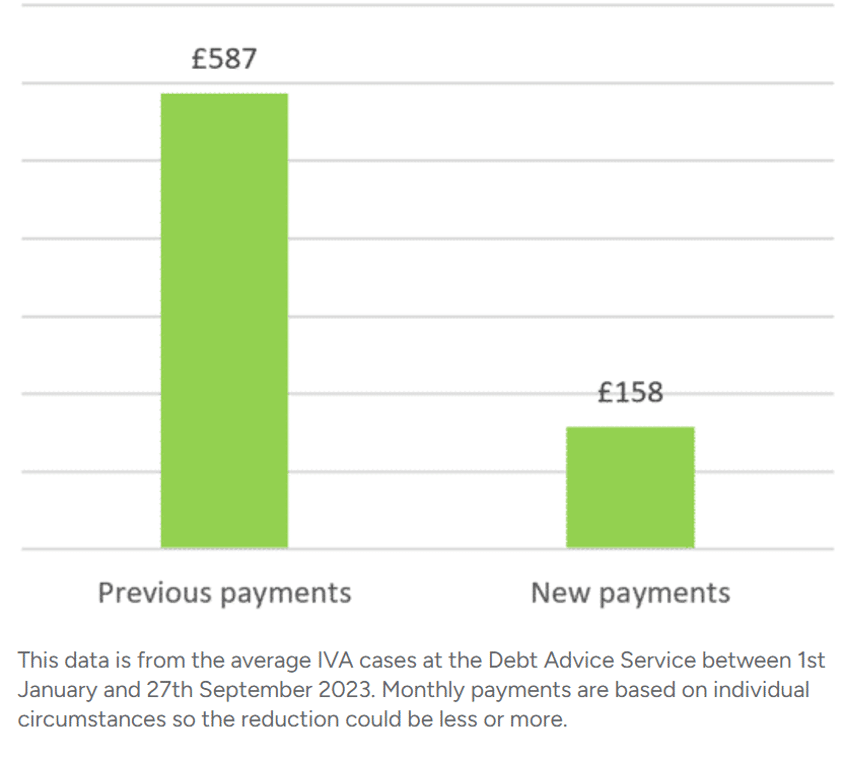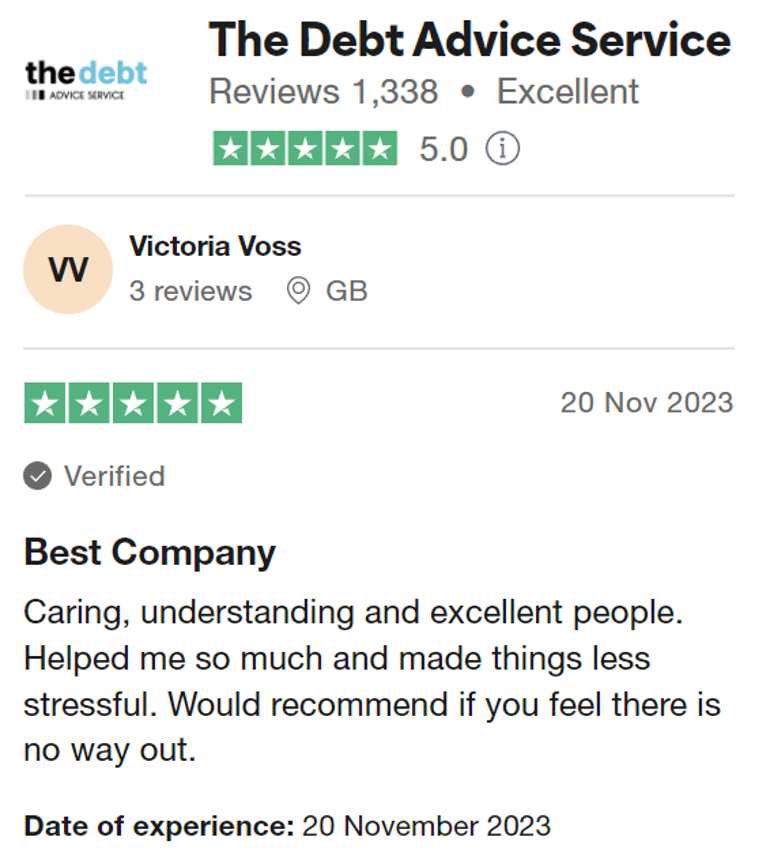Attachment of Earnings Rates
For free & impartial money advice you can visit MoneyHelper. We work with The Debt Advice Service who provide information about your options. This isn’t a full fact-find, some debt solutions may not be suitable in all circumstances, ongoing fees might apply & your credit rating may be affected.

For free & impartial money advice you can visit MoneyHelper. We work with The Debt Advice Service who provide information about your options. This isn’t a full fact-find, some debt solutions may not be suitable in all circumstances, ongoing fees might apply & your credit rating may be affected.
Are you worried about your earnings being taken to pay a debt? You might have heard of something called an ‘attachment of earnings’.
It’s normal to feel concerned about losing money or not being able to pay your bills; you’re not alone. Every month, over 170,000 people visit our website for advice on money matters.
This guide covers:
- What ‘attachment of earnings’ means and why it might happen to you
- How much money can be taken from your wages
- What to do if you’re not sure about the money taken from your pay
- If having an attachment of earnings changes your job
- How to manage your money and bills if an attachment of earnings happens
We know it can be scary when you don’t know what’s happening with your money, but don’t worry. We’re experts in understanding these tricky situations, and we’ll explain everything you need to know about attachment of earnings in clear, simple words.
Let’s dive in.
How much do you pay on an attachment of earnings?
The amount your employer will deduct from your salary each month will depend on your take-home pay and disposable income.
The courts will write to inform you that the attachment of earnings is being considered.
You’ll need to write back to provide information about your financial situation and any other debt in a Statement of Means Form N56.
You’ll need to work out your budget and provide all details within this form and return it to the courts within eight calendar days.
If you ignore the letter you could be asked in for questioning or even prosecuted.
However, the normal deduction is £25 each time. This is what is stated on the UK Gov website, but it is not set in stone.
Plus, you may have to pay an additional £1 admin costs to your company for arranging the transfer to the courts. The AOE impact on take-home pay could be considerable.
What is the protected rate?
Minimum wage and AOE rules set out how much an employer can deduct from wages.
The protected earning rate is currently £150. If you are paid below this amount, you will not have anything taken out of your take-home pay.
This limited amount is protected to make sure you can pay for essentials, such as food and rent.
How a debt solution could help
Some debt solutions can:
- Stop nasty calls from creditors
- Freeze interest and charges
- Reduce your monthly payments
A few debt solutions can even result in writing off some of your debt.
Here’s an example:
Situation
| Monthly income | £2,504 |
| Monthly expenses | £2,345 |
| Total debt | £32,049 |
Monthly debt repayments
| Before | £587 |
| After | £158 |
£429 reduction in monthly payments
If you want to learn what debt solutions are available to you, click the button below to get started.
Attachment of earnings deductions for council tax
Council tax repayment rates differ from those I mentioned above.
You do not receive a Statement of Means form if your attachment of earnings is being used to repay council tax debt.
This is because the amount of money you repay to the council is already decided based on fixed weekly and monthly rates.
Payments are worked out as a percentage of the amount you are paid, as follows:
Net weekly pay
Over £75 but less than £135 – 3%
Over £135 but less than £185 – 5%
Over £185 but less than £225 – 7%
Over £225 but less than £355 – 12%
Over £355 but less than £505 – 17%
Over £505 – 17% of the first £505 then 50% of the amount above £505
Net monthly pay
Over £300 but less than £550 – 3%
Over £550 but less than £740 – 5%
Over £740 but less than £900 – 7%
Over £900 but less than £1,420 – 12%
Over £1,420 but less than £2,020 – £17%
Over £2,020 – 17% of the first £2,020 then 50% of the amount above £2,020
Thousands have already tackled their debt
Every day our partners, The Debt Advice Service, help people find out whether they can lower their repayments and finally tackle or write off some of their debt.

Natasha
I’d recommend this firm to anyone struggling with debt – my mind has been put to rest, all is getting sorted.
Reviews shown are for The Debt Advice Service.
Attachment of earnings order calculator
Using tools for calculating AOE payments can save you time working out what payment deductions would be made to repay the council debt.
You can find these calculators by visiting local council websites, or by searching for online calculators for debt repayment.
» TAKE ACTION NOW: Fill out the short debt form
When does the money start being deducted?
Attachment of earnings deductions will begin when your employer next pays you after the order is applied. Unless the next payment date is within seven days.
In this case, the following payment date is when your employer starts to send payments to the courts.
What happens if I’m on maternity leave?
The rules regarding statutory maternity pay and AOE are pretty clear.
If you are on statutory maternity leave and are receiving no other form of employment income, you won’t make any payments during this period.
Statutory maternity pay is not subject to the attachment of earnings and no money will ever be taken.
And it’s good news is that paternity pay and debt recovery are the same.
Other statutory where pay is not deducted
There are related types of pay that are also not subject to the order such as:
- Statutory paternity pay is not deducted
- Statutory redundancy and AOE pay is not deducted
- Statutory adoption pay and debt recovery is not applicable
What happens if I’m off work sick?
Statutory sick pay is subject to an attachment of earnings, meaning your employer can take money from your sick pay and send it to the courts to repay your debts.
However, people on sick pay are likely to receive below the protected earnings rate and will not have to pay anything during their sick leave.
Can I just get my employer to stop paying?
Employer responsibilities in AOE are strict which means you are not allowed to ask your employer to stop sending money from your wage to the courts.
It is an offence for the employer to ignore the attachment of earnings. As such, the legal implications for ignoring AOE are far-reaching.
Will an attachment of earnings affect my job?
If you’re worried about AOE impact on careers, it will not affect your work unless you work in a specific role, typically in finance.
Special roles and AOE differ if you believe you could lose your career because of it. If this is the case, you may be able to stop the attachment of earnings.
Interestingly, some people who work in casinos can lose the license they need to do their job. When this happens, the worker can reapply for the license from the relevant body and continue working again.
What happens if I change my work?
There are rules you must follow regarding changing jobs and AOE.
If you start a new job, informing new employer about AOE is a must. Plus, you must inform them within seven days.
It is a serious offence to conceal this information. Your new employer will send money from your wage just like before.
However, if you remain out of work for a long duration, you can write to the courts asking for them to cancel the attachment of earnings.
It will not cancel your debt to your creditors, but you may want to write to them as well and ask them to consider writing off the remaining money you owe.
Can I stop an attachment of earnings order?
You may request suspending an AOE order. To do this you will have to tick an appropriate box on the Statement of Means Form.
If it is suspended, you will still be asked to repay the debt by sending repayments directly to your creditors.
Defaulting on an AOE order once suspended, it will be activated, meaning your company will now take money from your wage and send it to the court.
What is a consolidated attachment of earnings order?
Consolidating debt for AOE is an option. In short, if you already have one of these orders and are due another one, you can request a consolidated order.
It lumps all debts together so you still only make one monthly consolidation payment from your take-home wage.
Be aware, that court fees for consolidated orders will apply.
So, if you go down this route, you will have to pay the courts a 10% admin fee, which could make it longer to repay what’s owed.
Debt solutions are available!
If you are dealing with multiple arrears and debts that you can’t afford to repay, you may want to consider your debt solution options.
Read about the best debt solutions on our dedicated debt solutions page.
You may even be able to write off some of your debt!
For example, a Debt Relief Order can be used to block all existing lenders from contacting you asking for you to repay – or prevent legal action – for a full year.
If your financial situation doesn’t improve during that time, writing off debts that are left could be an option.


